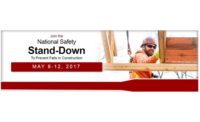Historically, falls are the leading cause of fatalities in construction, accounting for about one-third of all fatalities in the industry. For example, in 2010 the Bureau of Labor Statistics (BLS) reported that 751 construction workers died on the job, with 35 percent of those fatalities resulting from falls.
In 2013 the trend continued, with BLS reporting 291 fatal falls to a lower level, out of 828 total fatalities. And then in 2014, OSHA has stated that there were 337 deaths from falls in construction.
OSHA recognizes that accidents involving falls are generally complex events frequently involving a variety of factors. Consequently, the standard for fall protection deals with both the human and equipment-related issues in protecting workers from fall hazards.
The OSHA standards
The Fall Protection standard at 29 CFR 1926 Subpart M (1926.500 through 1926.503 and non-mandatory Appendices A through E) sets requirements and criteria for fall protection where construction activities are taking place.
However, there are fall protection requirements in other construction standards, including fall protection for employees working on:
- Scaffolds — Subpart L.
- Cranes and derricks — Subpart CC.
- Steel erection projects — Subpart R.
- Certain types of equipment used in tunneling operations — Subpart S.
- Aerial lifts or on poles, towers, or similar structures while engaged in the construction of electric transmission or distribution lines or equipment — Subpart V.
- Stairways and ladders — Subpart X.
Summary of requirements
OSHA requires the use of fall protection when construction workers are working at heights of six feet or greater above a lower level. It applies at heights of less than six feet when working near dangerous equipment, for example, working over machinery with open drive belts, pulleys or gears, or open vats of degreasing agents or acid.
The steps for compliance are:
t Initially, employers must assess the workplace to determine if walking or working surfaces have the necessary strength and structural integrity to safely support the workers.
t Once it is determined that the work surfaces will safely support the work activity, the employer must determine whether fall protection is required per 1926.501.
t If fall protection is needed, the employer must select and provide workers with fall protection systems that comply with the criteria at 1926.502.
Note that Subpart M does not apply to employees inspecting, investigating, or assessing workplace conditions before the actual start of work, or after all construction has been completed.
Where fall protection may be needed
The standard identifies certain areas and activities where fall protection or falling object protection may be needed. For example, it might require fall protection for a worker who is:
- On a ramp, runway, or walkway;
- At the edge of an excavation;
- In a hoist area;
- On a steep roof;
- On, at, above, or near wall openings;
- On a walking or working surface with holes (including skylights) or unprotected sides or edges;
- Above dangerous equipment;
- Above a lower level where leading edges are under construction;
- On the face of formwork and reinforcing steel; and
- Otherwise on a walking or working surface six feet or more above a lower level.
- The standard may also require fall protection where a worker is:
- Constructing a leading edge;
- Performing overhand bricklaying and related work; or
- Engaged in roofing work on low-slope roofs, precast concrete erection, or residential construction.
Types of fall protection
Generally, fall protection can be provided through the use of guardrail systems, safety net systems, or personal fall arrest systems. OSHA refers to these systems as conventional fall protection.
Other systems and methods of fall protection may be used when performing certain activities, which include controlled access zones, warning line, and safety monitoring systems.
Fall protection training
Employers must make sure that each worker has been trained as necessary, by a competent person who is qualified in the following areas:
- The nature of fall hazards in the work area.
- The correct procedures for erecting, maintaining, disassembling, and inspecting the fall protection systems to be used.
- The use and operation of controlled access zones; guardrail, personal fall arrest, safety net, warning line, and safety monitoring systems; and other protection to be used.
- The role of each worker in the safety monitoring system when the system is used.
- The limitations on the use of mechanical equipment during the performance of roofing work on low-slope roofs.
- The correct procedures for equipment and materials handling and storage and the erection of overhead protection.
- The role of workers in fall protection plans.
- OSHA’s fall protection requirements in Subpart M.
Failure to comply with the standards
OSHA compiled a list of the most frequently cited serious violations in construction for 2014. Take a look at the table and you’ll see that eight of the top ten violations were related to falls (residential construction work, use of ladders, scaffolds, and aerial lifts).
OSHA defines a serious violation as a violation where there is a substantial probability that death or serious physical harm could result and the employer knew or should have known of the hazard. Currently this violation carries a proposed penalty of $3,000 to $7,000. In addition, OSHA penalties are expected to increase dramatically in the near future.
Final thoughts
Falls in construction are happening at a greater frequency than before, resulting in hundreds of deaths and countless injuries each year. Protect your employees by assessing the workplace, determining whether fall protection is required, and if so, selecting and providing workers with OSHA-compliant fall protection systems.



